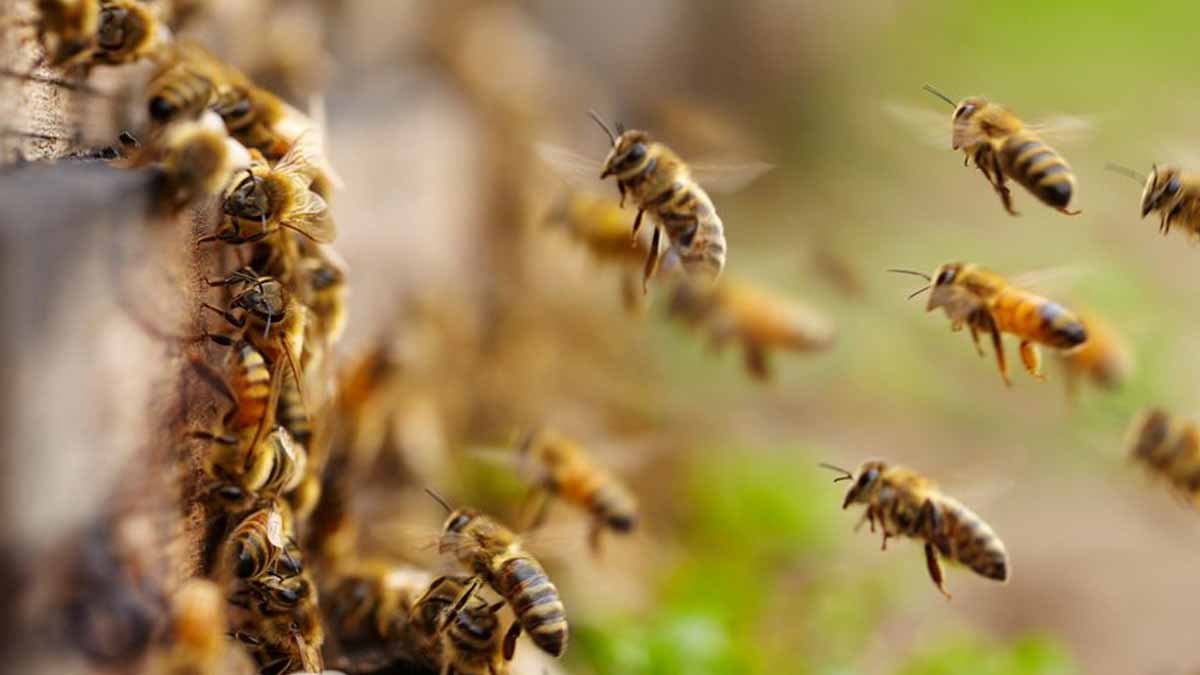Harvests depend on tiny wings. When hives weaken, orchards and fields falter. Scientists have pinpointed the nutrients bees need, the missing pieces that unlock healthy growth. The effect is striking: colonies can multiply fast when diet truly fits biology. This breakthrough changes the picture for pollination and food yields while keeping the focus on what goes inside the hive. What it means, why it matters now, and how it could shape the season ahead all start here.
The sterol gap that starves colonies
Bees struggle when landscapes lose floral diversity, because pollen quality drops while energy demands stay high. Protein flours, sugars, and generic oils fill hives but not bodies. Colonies then rear less brood, and growth stalls even as foragers keep flying. Real nutrition depends on precise lipids, not bulk calories.
Commercial substitutes often lack those precise sterols, so brood fails to reach pupation at scale. Colonies may appear active, yet development stops as reserves run out. This mismatch explains seasonal crashes many beekeepers report, and why adding more of the same ingredients rarely fixes anything long term.
Researchers set out to supply the exact nutrients bees need, at the right ratios. They focused on larval uptake, nurse bee metabolism, and the sterol signatures found inside healthy tissues. The goal was simple: build a complete, pollen-like profile without harvesting scarce wild resources.
Precision fermentation targets the nutrients bees need
Engineers used CRISPR-Cas9 to program the oleaginous yeast Yarrowia lipolytica to synthesize six key sterols that underpin larval growth. The list included 24-methylenecholesterol, campesterol, isofucosterol, β-sitosterol, cholesterol, and desmosterol. Because this yeast already handles lipid pathways well, yields scale in standard bioreactors.
Yeast biomass was grown, harvested, and dried to a stable powder, then blended into an otherwise familiar feed. Trials ran for three months inside enclosed glasshouses so bees ate only the experimental diets. That design removed background pollen noise and let the team measure clean, colony-level outcomes.
The mechanism proved elegant. Nurses convert dietary sterols into the brood food they secrete, so matching the natural sterol mix mattered more than adding extra protein. With the engineered blend, larval tissues displayed a sterol profile indistinguishable from naturally foraged colonies, which signals true biological adequacy.
What changes inside colonies when diet fits biology
Outcomes were striking. Colonies on the sterol-enriched diet reared up to fifteen times more larvae to viable pupae than controls. Because more larvae completed development, overall brood patterns stayed dense, and workers kept investing in the next cycle. Growth moved from hopeful to compounding.
Brood rearing also continued to the end of the ninety-day window, while sterol-deficient hives ceased brood production by day ninety. That difference shows a true nutrient bottleneck rather than simple seasonality. When the bottleneck was removed, colony behavior returned to a normal, forward-leaning rhythm.
Bees appear selective, too. Even with many sterols present in pollen, larvae consistently received the same core six. That selectivity explains why generic oils fail. The body uses what development demands, not what the bucket holds. When feeds align with the nutrients bees need, colonies convert food into bees, not waste.
Scale, numbers, and why this matters for fields and orchards with nutrients bees need
Pollinators support over 70% of leading food crops, so nutrition improvements cascade into agriculture and biodiversity. Annual U.S. colony losses have hovered around 40–50% in recent years and could reach 60–70% in 2025, so a dependable brood lift changes risk for growers and beekeepers at once.
The yeast chassis helps with cost and scale. Y. lipolytica is food-safe, already used for enzymes, omega-3 fatty acids, steviol glycosides, and pheromones. Because its acetyl-CoA metabolism excels at lipids and sterols, production runs fit existing fermentation lines, which lowers barriers to adoption.
There is a bonus: the biomass carries proteins and beneficial lipids, so the supplement can evolve into a complete feed. By meeting internal demand in hives placed near almonds, apples, or cherries, pressure on scarce wildflowers decreases. That helps wild bees by easing competition for limited pollen.
Wider applications, practical guardrails, and what comes next
Field reality is messy. Colonies still face Varroa mites, viral diseases, and pesticide exposure, so nutrition must pair with management. Large, open-landscape trials will test long-term survival, pollination efficacy, and overwintering strength. The glasshouse results guide the roadmap; the fields will prove durability.
Because precision fermentation is modular, the same approach could tailor diets for other pollinators or farmed insects. Formulas may adapt to season, region, or crop bloom windows. Dr. Elynor Moore likened the shift to moving humans from meals missing essentials to balanced plates at the molecular level.
Beekeepers want plug-and-play tools, not lab chores. A dry, storable powder checks that box. If regulators and supply chains align, availability could come within two years. When feeds finally match the nutrients bees need, hives can turn scarce forage into stable brood, even in lean landscapes.
Why this breakthrough points to a new way to help bees without draining wildflowers
This work shows that matching internal biology beats piling on generic calories. A sterol-complete feed produced fifteen-fold gains, sustained brood, and larval profiles that mirror natural foraging, while remaining scalable and safe. With precision fermentation, beekeepers gain a tool that protects yields and landscapes by feeding bees exactly what their development requires—nutrients bees need.
